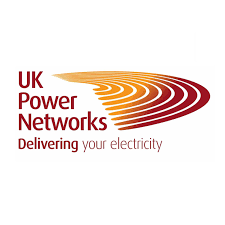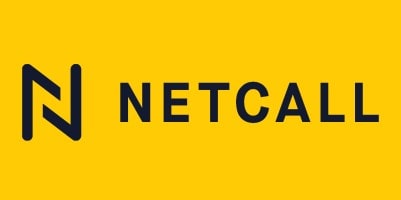From AI to automation: Can technology put utilities back on top for customer centricity? Richard Farrell, CIO at Netcall discusses

Amid the ongoing cost of living crisis, people are struggling to afford the essentials. And when they reach out for help, often utility providers – including water, electricity, and gas, are failing to respond in a way that is frictionless and satisfactory due to a lack of digital capability, along with broken processes and siloed data within their systems. Such failings – over time – have led to a bad reputation for the sector, which has been deemed to be the worst-performing for customer service.
 Whilst the Autumn budget revealed funding to support people with the cost of living – including a boost to wages and housing payments, tough times still lie ahead for many. Fuel poverty, for example, has become a growing issue across the UK as many families struggle to keep up with ever-increasing energy bills. In fact, the latest rise to the energy price cap saw costs increase by 10% in England, Wales, and Scotland in October[2]. Under the new price cap, the typical annual dual-fuel bill will be £1,717 per year, a rise of £149. At the same time, around 10 million pensioners will no longer get winter fuel payments to help them with bills at the coldest time of year. And, if that wasn’t enough to contend with, consumers are also facing a sharp rise in water costs[3] – further compounding the issue.
Whilst the Autumn budget revealed funding to support people with the cost of living – including a boost to wages and housing payments, tough times still lie ahead for many. Fuel poverty, for example, has become a growing issue across the UK as many families struggle to keep up with ever-increasing energy bills. In fact, the latest rise to the energy price cap saw costs increase by 10% in England, Wales, and Scotland in October[2]. Under the new price cap, the typical annual dual-fuel bill will be £1,717 per year, a rise of £149. At the same time, around 10 million pensioners will no longer get winter fuel payments to help them with bills at the coldest time of year. And, if that wasn’t enough to contend with, consumers are also facing a sharp rise in water costs[3] – further compounding the issue.
As everyday prices remain high, putting increasing pressure on households and their hard-earned cash, never has it been more important for utility companies to get on top of their customer service. Especially as customer-centric companies are said to be 60% more profitable than companies that aren’t[4]. Not to mention the financial incentives on offer for water providers who excel in this area. As reported in Ofwat’s draft determinations for 2024 price review, water companies will be faced with both rewards and penalties to drive a step change in performance[5].
Powering up CX with technology
Delivering good customer service in the utilities sector has certainly become more challenging as many people struggle with the rising cost of living. Whilst it won’t eradicate the problem, technology – if harnessed effectively – can help companies improve customer experience by providing proactive support during today’s tough economic climate.
For example, many customers searching for support will begin this journey on the web, often opting for self-service where possible. Some people, however, will need to escalate their problem and will seek live support functions to do so. By embracing Low-code Application Platforms (LCAP), which simplify process development, utility providers can rapidly build and deploy digital tools and applications that support the customer journey. Taking this a step further, by opting for Contact Centre as a Service (CCaaS) solutions, that combine low-code process development capabilities, brands can make the most of tools such as Conversational AI and Interactive Voice Response (IVR) technology to enhance the online journey, and effective agent routing should the conversation need human intervention.
Tapping into data
Often the underlying cause of customer frustration when using online and digital customer service solutions is a lack of data integration within the customer service team, and wider business – which can cause issues such as missing information, slow responses, and requests going completely unanswered. That’s because customer data is often caught up in siloed, disconnected systems that don’t talk to each other and do not empower customer service agents to offer the necessary solution.
Fortunately, advances in CCaaS solutions – underpinned by low-code – are available to bridge this data gap, whilst providing seamless communication between utility teams and customers 24/7 via a range of channels including self-service. Intelligent automation technologies and robotic process automation are also becoming more commonplace in business, and if used correctly, can help utility companies digitise repetitive tasks, freeing up contact centre personnel to dedicate time to customers, resolving queries faster, and providing a first-class experience.
Shining a light on exceptional service
UK Power Networks, is one example of a utility provider within the energy sector that is ahead of the curve on customer experience. Having been recognised as the top customer service provider in the UK Customer Service Index in July 2022[6], customers rate them highly for factors such as strong communication, trust, being open and transparent, having helpful and competent people, and an easy-to-use website.
is one example of a utility provider within the energy sector that is ahead of the curve on customer experience. Having been recognised as the top customer service provider in the UK Customer Service Index in July 2022[6], customers rate them highly for factors such as strong communication, trust, being open and transparent, having helpful and competent people, and an easy-to-use website.
So, how did they do it?
By leveraging a platform approach – built on low-code software – the provider has been able to drive significant improvements in operational efficiency which have directly impacted the customer journey. By deploying tailored low-code solutions, UK Power Networks has also streamlined critical processes and empowered its teams to resolve customer queries faster, reducing friction in service delivery. Meanwhile, the ability to rapidly build and adapt applications has enabled the company to respond to changing needs without relying on extensive development resources. As a result, UK Power Networks is setting a new standard for how utility providers can enhance service levels while improving internal productivity.
Preparing for a brighter future
Whilst the ongoing price increases we are witnessing are likely to provide further challenges for utility providers as they navigate the customer experience landscape, it also provides an opportunity for these companies to support their customers in a way that will nurture and encourage loyalty beyond these times of hardship. By embracing digital solutions such as AI and automation through a platform-driven approach, utility providers can prepare themselves for what’s to come both now, and in the future.
![]()
 Over 600 organisations in financial services, insurance, local government and healthcare use Netcall’s Liberty platform to make life easier for the people they serve.
Over 600 organisations in financial services, insurance, local government and healthcare use Netcall’s Liberty platform to make life easier for the people they serve.
Liberty Converse is the next-generation, AI-powered contact centre solution that redefines how businesses engage with their customers. The cloud-native platform extends its robust contact centre software capabilities to harness the power of intelligent process automation and rapid application development, setting Netcall apart in the competitive landscape.
Liberty Converse is part of Netcall’s Liberty platform which provides cut-through process automation and communications solutions, helping organisations to achieve their business goals faster in a rapidly changing world. Liberty offers user-friendly, AI-driven tools to create business applications that automate processes, streamline workflows and enhance both customer and employee experiences.
For additional information on Netcall view their Company Profile



